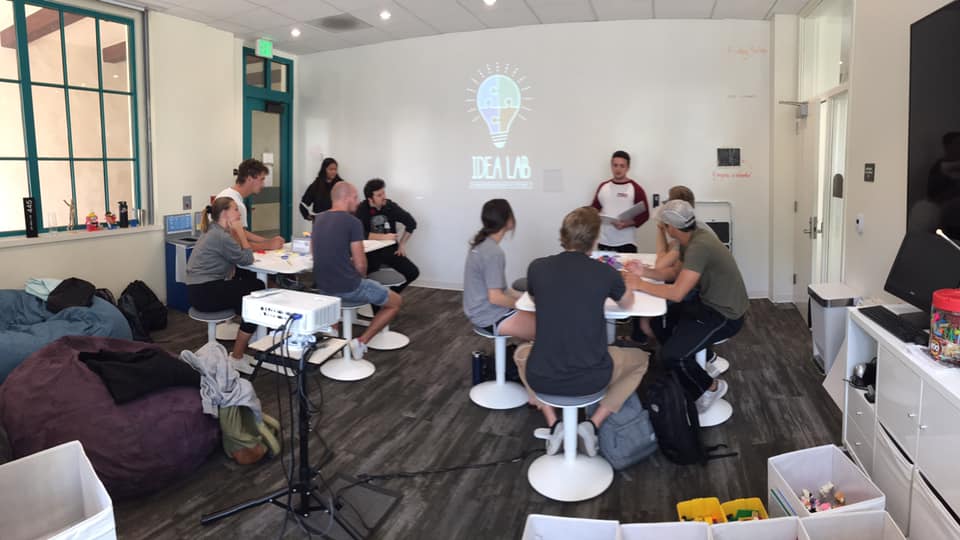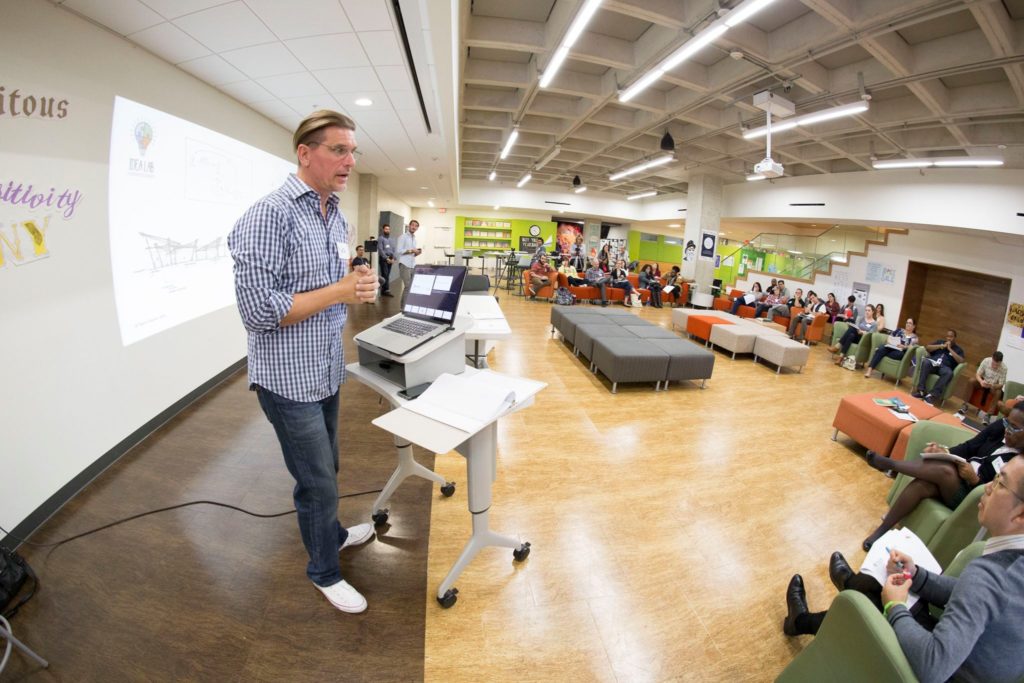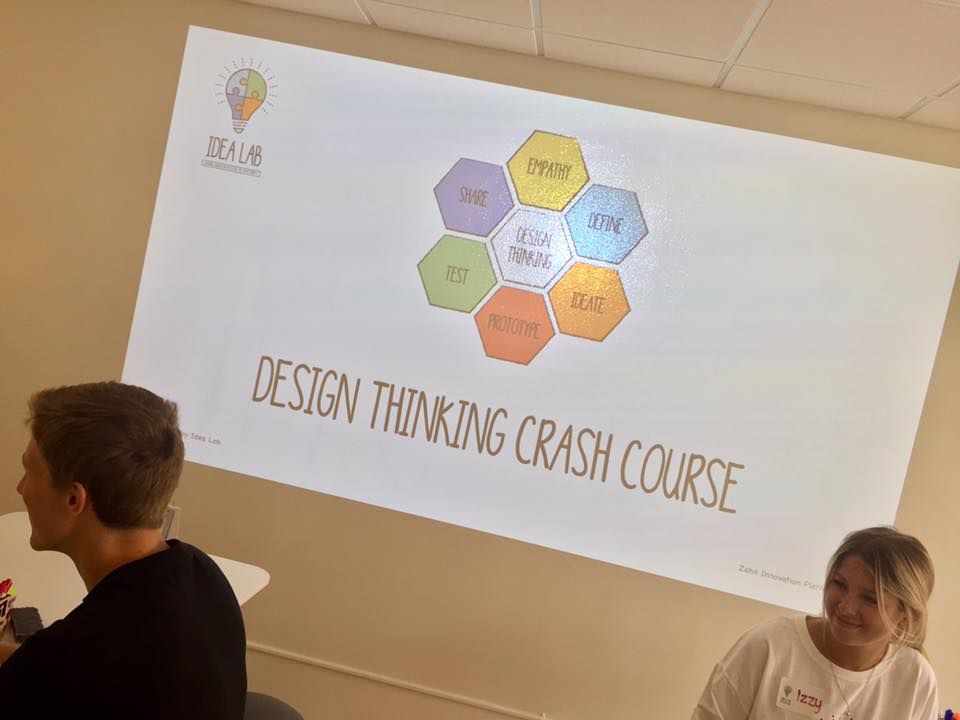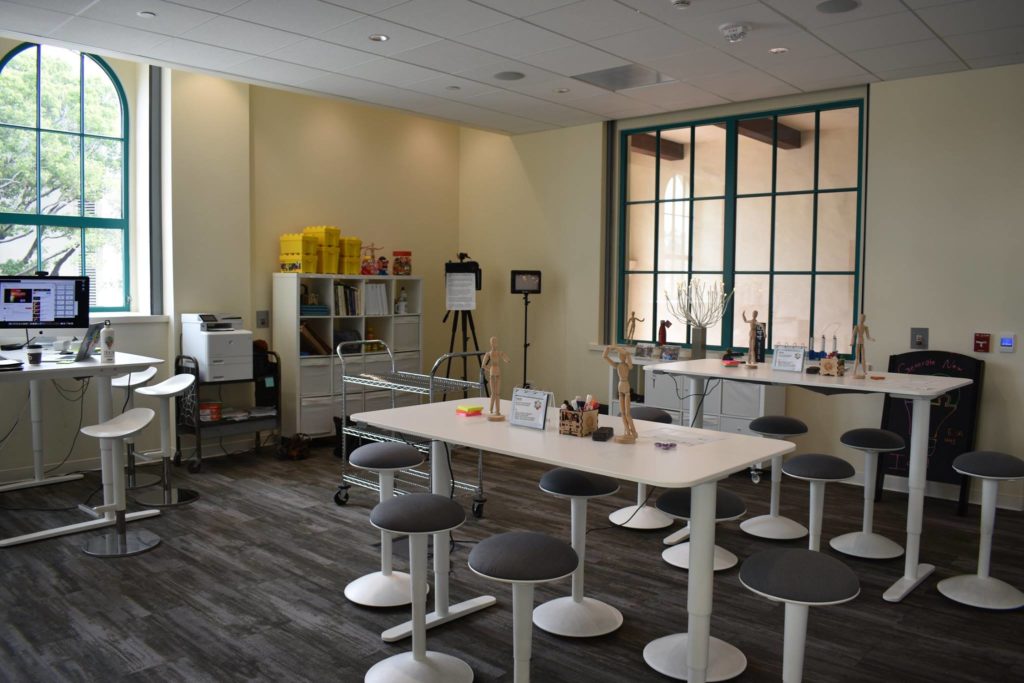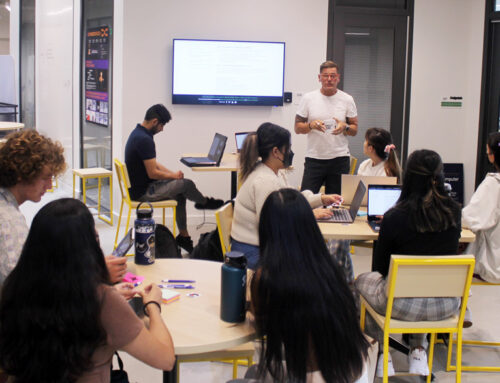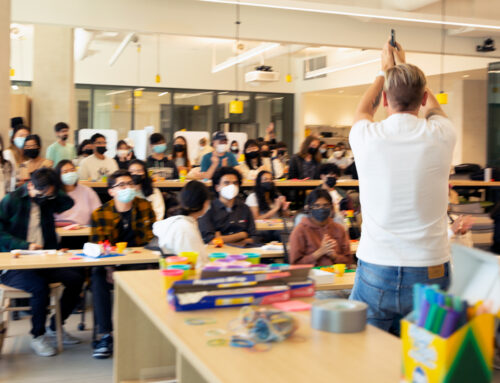Retrospect: 5 Lessons Learned from Creating the ZIP Idea Lab
The Idea Guy • January 4, 2019
I ❤️ academia.
Teaching Creativity + Innovation in the School of Management at San Diego State University School of Management was the perfect application of my professional experience as the Founder of Ideahaus, a Creative Communications Agency. I incorporated what I learned works best from 25 years serving CEO’s as The Idea Guy into my syllabus, teaching future business leaders how to be more creative.
When the description was posted for a campus-wide position as the Inaugural Director of the Idea Lab, I thought I was being punked. Must be professional creative with track record. Must have experience in education. Must work with ZIP Launchpad (innovation center). Must work with Lavin Entrepreneurship Center.
Must have a big personality? This is funny if you know me.
When VP of Graduate Research Steve Welter shared this in a Lavin Board meeting, I said, “Are you kidding me? Just give me the job and lets get started!” He chuckled, declined, and said that, despite my alignment, SDSU was required to execute a national search.
Fast forward to the final two: me and a guy from Miami Ad School. I don’t know if my home-field advantage helped tip the scale, but I was named the Zahn Chair of Creativity and Innovation, Inaugural Director of Idea Lab.
Lesson 1: If you don’t go after the big opportunities in education, you’ll never get a big opportunity in education. When you find an opportunity that resonates with the reason you became an educator, package your offering, prepare your pitch and sing it like it’s the last song people will remember from you.
On Creating A Creative Space
I was assigned a small, unused conference room that looked like a crime scene: papered windows and a series of suspicious stains on the carpet in the outline of a body. A good scrub down after the oversized office furniture was removed provided enough space for a few Ikea electric stand/sit desks and some adjustable stools. With an epoxy coating on the longest wall, we created a 24′ floor-to-ceiling whiteboard that would become our most productive tool for collaboration.
In lieu of a 50” wall-mounted monitor, I opted for a ceiling-mounted projector providing a 110” image when I needed one. I kept my staff from worshiping a false God (a device) and focused on what was most important: their drawings, mind maps and notations. Superfluous content, like television, social media and PowerPoint, is often nothing more than candy for the brain.
Lesson 2: In most meetings, each person creates their own notes and sketches, keeping them on paper for their own reference. When people add their notes to a whiteboard wall, everyone sees them. Others build off those ideas, continue the diagrams, and everyone is involved. The result is more evolved thinking in shorter times. Taking a picture of this output and adding it to a shared project collaboration tool, like Basecamp, provides access to this reference, as well as a mechanism to continue this line of thinking.
On Building a Team
I had already been teaching Design Thinking at SDSU in my classes, so I had been thinking about how to best teach en masse. What I did know from my agency experience is one creative doesn’t scale, no matter how good they are, so I needed to create a staffing program that would.
With no budget for staff, I looked at interns – students who would offer their time in return for an experience or education they valued. I posted the description for a one-year internship program to reduce how many times I would have to recruit annually, although I accepted new applications each semester. I looked for diversity – students from different educational programs, socio-economics and ethnicities – in order to include different perspectives in our services and offerings. Courses that were based on an internship provided prospects because they had to get an internship to earn their credits. Programs that were based on entrepreneurship and innovation also provided prospects as my offering complemented that learning.
Training started with shadowing me like I had done at Ideahaus, but it took too long to get them to a point where they could work with others on their own. A formal training program was initiated, requiring reading, short essays and a couple papers sharing what they learned. Supporting workshops lead to facilitating workshops using slides and a script. Mandating adherence to the script kept them on-time, reduced mistakes and the redundancy (doing it over and over again) made it part of their lab-speak. With the online training program, Idea Lab can now get a newbie up-to-speed in 30 days, increasing their overall contribution.
Lesson 3: Students that were (extrinsically) interested in the internship for credit did not (statistically) perform at the same level as those who were (intrinsically) motivated to help others. The latter showed up earlier, stayed later and often served longer than the one-year term required. On-boarding staff with signing a Letter of Intent emphasized the commitment they were making to the University.
On Creating Engagement
With a facility open and a staff in training, we needed to identify clients to serve. Students, faculty, administrators – anyone with a SDSU RedID that needed to generate a new idea or solve a problem. An unsolicited story in the University paper helped introduce and position Idea Lab to its target markets.
We put the compulsory communications in place: website, Facebook, Instagram, Twitter, LinkedIn and EventBrite. We created lists in MailChimp by scraping department websites, using email lists from the university to reach students. Outbound emails and social posts helped our community understand who we are, what we did and who we helped.
We created a short menu of products based on what we learned from responses. A five-minute introduction offered in the classroom for students and teachers. A 30-minute lecture on Design Thinking to supplement learning in the classroom. A 90-minute workshop that provides an experience using Design Thinking, as well as a prototype that provided proof to the student that they could do this.
Lesson 4: The general (Design Thinking) workshop was our most requested product because it was something professors could not easily do – not only because of the knowledge, but because it required materials not often found in the classroom (arts and crafts, play-doh, legos, etc). When we changed the title to “Crash Course,” the perception was that it was less of a time commitment (even though it was the same). When we added “for Entrepreneurs, for Engineers, for Marketers,” we increased requests because professors assumed it was unique to their subject matter. The only difference was the example we provided to demonstrate someone in their field had already applied Design Thinking.
The Results
The lab was operational in less than 90 days and generated revenue teaching teachers how to do what we did at E3 Civic High School. We recruited nine students, with seven completing their one-year commitment. We used pics on social media and leveraged their testimonials to recruit additional staff.
The first year, we engaged about 1,100 students, faculty, staff and administrators. We had nine projects that requested our services to lead them through our process, like Bomfy B.
The second year, we engaged approximately the same number of people but increased our projects by nearly 500% (49 projects). We are able to tell stories about the projects we had, supported as proof our process worked, and we solicited reviews that helped others better understand what was in it for them.
When we moved into the newly constructed Engineering and Interdisciplinary Sciences Complex, we became co-located with ZIP Launch and the Lavin Entrepreneurship Center and our space became the focal point of the University. All tours lead to us, and we had become one of the stops on every campus tour. Collectively, we were recognized by NASDAQ Entrepreneurship Center as a model of “Excellence in Entrepreneurship.”
Lesson 5: Nobody builds a Design Lab by themselves or in a bubble; I found allies and early adopters. There were emails, phone calls, sales pitches and favors called in to get people to jump into waters they did not understand, and there were a lot of things that didn’t go as planned. I accepted failure as long as I believed we we learning from it, and I sold all of the learning to management as part of the process. Authenticity helped support realistic expectations, and transparency kept our credibility in play with every member of our community.
Directors Notes
I’ve had a need for creative spaces throughout my career – personal studio, startup agency, internal department, academic. I’ve also needed good people to be better than they were when I found them: part of the quid pro quo.
If you have questions about creating spaces, team building, training or creating engagement, just ask – it’s what I do. – The Idea Guy
Want to learn how to create an Idea Lab at your university? Contact The Idea Guy!
